(Last Updated 2015/04/28)
So made your way into the Hello!Pro Tap Live application, waited out the long download after starting up the first time, picked out your Avatar, and started your game. But now what do you do? Well this guide won’t cover everything but will help you navigate the game in it’s current iteration*.
*interface could change, currently screenshots and descriptions based on the Android 1.0.1 release of the game.
If the pictures too small try opening it in a new window, it’s a little bigger, but not too big cause it’d take up too much space!!
This is a casual guide for those starting out. I honesty am doing this for whatever reason so sometimes I will break out of formal writing, this is not an official guide by any means!
Main Screen
Gacha
Avatar
Outfits
Options
Settings
Friends
Members
Forming Groups
Idol Profile
Stage Appeal/Skills
Card List
Lesson
Lives
Playing
Scoring(Possibly)
Random Tips
Links to Other People’s things
—–
Main Screen
—–
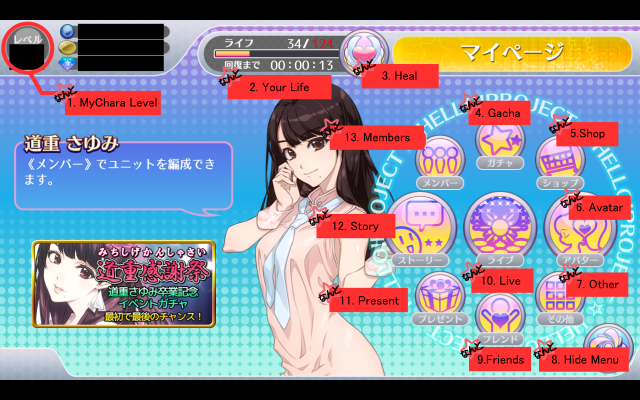
1. MyChara Level – Your created characters level this determines several factors
+ Your current life (aka how much stamina you have).
+ Your current cost limit (card usage limits).
+ Your current friend limit (how many supporters you can have).
+ Your current library limit (how many cards/idols you can keep on the side).
+ Your MyChara’s stats (Your own power, HP, what not).
Next to chara level are your stats
a. Your name
b. Your haro / in gamemoney
c. Your star stones – premium item save them for good gacha!
2. Your Life – your current stamina, currently replenishes 1/minute, auto refills on level up.
3. Heal – can trade 1 star stone to refill your life, personally I don’t think it’s worth it!
4. Gacha – the capsule draw for more idol cards, currently only has Sayu Special Premium and Friend Gacha,
5. Shop – where you can spend real money on star stones, personally not worth the effort.
6. Avatar – See your avatar and ways you can change it
7. Other/Options – Other options which aren’t used often
8. Hide Menu – hides the circle menu so you can see the left side of your idol…I guess?
9. Friends – menu to see friends you have and requests you’ve made or made to you.
10. Live – Perform in a live, the main music mechanic!
11. Present – Pick up daily presents from this screen. Presents happen at the start of every day and if they give gifts for any reason.
12. Story – watch story sequences, watching story sequences open up new songs or difficulties to perform!
13. Members – your team and collection
—–
Gacha
—–
The Gachapon or Capsule drawing is your basic way of getting cards/idols. While you will gain new cards/idols as drops from your performances, the Gachapon can provide you with more quickly.

Currently only two Gachapon types exist, Sayumi’s Graduation Premium Gachapon and Friend Gachapon.
-Premium Gachapon requires using Star Stones
-Friend Gachapon uses friend points which are gained from doing lives.
While there probably isn’t any ratio difference between doing a single draw versus a 10 draw, 10 draws are simply faster.
Currently Premium Gachapon costs 3 star stones for one card, and Friend Gachapon cost 100 friend points for one card.
The Avatar menu contains information about the Idol you created at the beginning of the game, most of which is still changeable.
![]()
1. Your name – the name you chose to represent you.
2. Comment – anything (within reason) you want to say
3. MyChara name – the name of your custom idol.
+Note: your idol will never have a cost and is always required for play.
4. Appeal – The base power your idol earns per hit in lives.
5. Fans – The base hit points your idol gives to your group.
6. Limit Breaks – The expansion of levels available to your character.
+Limit Breaks in this game are basically ways to raise your level cap. For your MyChara, Limit Breaks happen when you get so much FC power (gained from having friends)
7. Stage Appeal – Your special technique which occurs during a life.
+For your MyChara, this is determined currently by the clothes and accessories you give them. The Green button supposedly allows you to change it based on what is available but as of this guides writing, only one skill is available.
8. Unit Skill – Currently I have not seen a MyChara with a Unit Skill.
9. Outfit List – shows your currently available tops, bottoms, shoes, accessories, and held items. You will have all the items you were presented with when you picked your starting clothes. Holding on the item will show what skills are given by the items.
10. Make up – Allows you to change the hairstyle and features of your idol, same options as when you started the game.
11. Change Outfit – Allows you to change the clothes your character is wearing. For your MyChara the combination of items will change the type/color of your MyChara as well as their Appeal and Fans. It’s up to you to pick either what you like, or what will give you the type and power you desire.
—–
!!NEW!!Outfits
—–
Now that more outfits as been distributed we can cover this a little.
The Change Outfit and Outfit list screen both allow you to look at your items based on their categories in the order: Tops, Bottoms, Shoes, Accessories-1, and Accessories-2. At this current interval only one of each type can be equipped.
On the Change Outfit or Outfit list screens, pressing and holding will bring up the stats for it.
This includes the Appeal Power and Fan power the outfit item will provide you when you equip it and any skills it may give your character. Note that it contains 3 skill slots, so that opens the possibility for an outfit to allow you access to multiple types of skills.
Skills from items stacks, though only if they are of the same power of skill, that means if you have both Positive Heart lv.1, and Positive Heart (Medium) lv.2 from two items your avatar is wearing they will not stack, but equipping a top with Positive Heart lv.1 and a bottom with Positive Heart lv. 2 will give you the choice of using Positive Heart lv.3 as your Stage Appeal.
Having multiple skills will not give you access to all of them and you’ll have to pick your skill by pressing on the green button next to the Stage Appeal area of your Avatar profile. (See Stage Appeal section for more information about Stage Appeal Skills).
1. News – the announcements shown when you first start the program
2. Ranking – see how you rank up against everyone else; weekly, overall, and per song statistics are available.
3. Player Options – contains options which overlap the Avatar options, and the option to see your Player ID and password needed to transfer your data to another device.
4. Settings – Additional settings.
5. SNS etc. – Post advertising the game to Twitter or Line!…That’s it!
6. Idol Library – See all the idols you’ve collected in game, don’t worry about needing to keep a copy of every card/idol!
7. Inquires – opens in a new browser, I honestly never looked at it.
8. Policies – all the technical jargon and stuff, again never really looked at it.
9. Help – learn more about the rules and directions and everything. It’s in Japanese so that won’t help you if you can’t read Japanese, but that’s what I’m here for ^^;
—–
Settings
—–
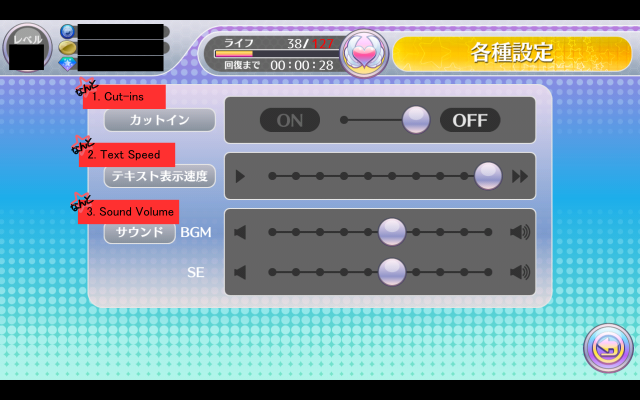 1. Cut-ins – allows you to turn on or off the ability to see your idols flash on screen when doing their stage appeal skills. If you find seeing the images of your idols dashing on screen distracting, you should turn this off.
1. Cut-ins – allows you to turn on or off the ability to see your idols flash on screen when doing their stage appeal skills. If you find seeing the images of your idols dashing on screen distracting, you should turn this off.
2. Text Speed – change the speed of the text in story mode.
3. Sound Volume – adjust Background Music and Sound Effect Volume.
—–
Friends
—–
Join together with friends or fellow Wotas in the fight for…whatever! Having friends will give you friend points, and you’ll gain more friend points after a live by using Friends over other people available!
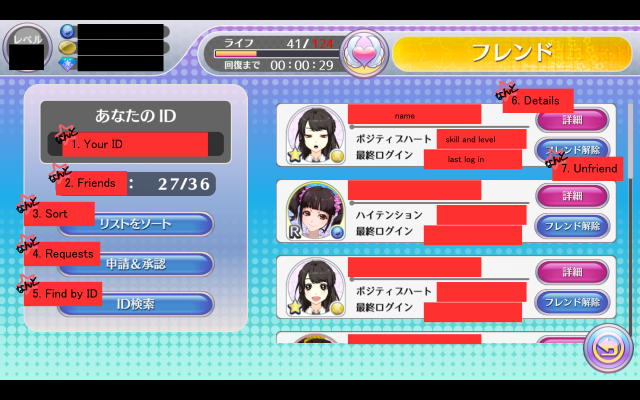
1. Your ID – your ID number to give to friends to have them be friends with you!
2. Friends – your current friends and the limit of friends you can have, the limit goes up as you level! Friend number is also related to when your MyChara/Avatar will Limit Break to raise her level cap.
3. Sort – sort your list of friends or requests seen on the right.
4. Requests – show the current requests you have, both ones you’ve made and ones made to you.
+Clicking on this button once will show requests you’ve made in a list, by clicking on the blue button next to a name in this screen you’ll be given the option to take back your friend request
+Clicking this button again will change the list to requests made to you. By clicking the pink button on this screen you will be accepting them as your friend!
5. Find by ID – type in the ID number of someone to add them to your list!
6. Details – see the details for the person in your friend list
7. Unfriend – did you friend a person who isn’t playing anymore? Can’t make use of them? Unfriend them to find new ones!
—–
Members
—–
The members button will show you the groups you’ve formed for lives!
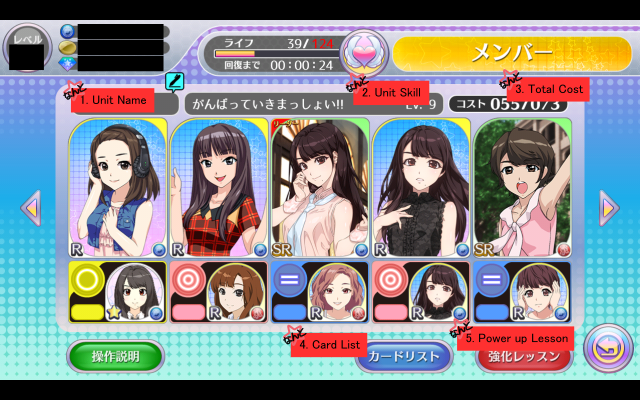
1. Unit name – name your unit based on your choices!
2. Unit skill – the unit skill is determined by whatever unit skill dominates your group.
The level of the unit skill has to do with the unit skill level of the individuals but the exact calculations are not known by me. Even if all the characters don’t have the same skill high skills can raise the level.
Higher levels are better of course, but what exactly the group skill does is not something I currently know either.
Currently Unit Skill are based on the real life group the idol is in, and Rare and above have different level skills than their Normal level equivalents (example: A Momusu Normal will have Gambatteikima…., while a Momusu Rare will have Gambattikimashoi!!)
3. Total Cost – how much your group costs out of your limit. Raises with your level.
4. Card List – see how many cards you have and what they are here. This is also where you can graduate (aka sell) your cards/idols for more haro money.
5. Power Up Lesson – Sacrifice other cards to power up your stars!
Anytime you can see a picture of one of your cards/idols you can hold down on it to open the profile for that idol
—–
Forming Groups
—–
Forming group has 5 front line performers and 5 sub-group members bringing the total up to 10. Your MyChara/Avatar must be in your group to use them!
Sub-member involvement appears to be related to skill activation and use of Fever Time power up. When Fever Time occurs (every 50 combo) your sub-members power is added to your members power in that position. Sub-members skills will also activate independently of your member.
Sub-group members and members have compatibility with each other: neutral (equals), weak (triangle), good (circle), really good (lots of circles). The compatibility with other members gives boosts to the time which a skill lasts for, having greater compatibility in general makes skill activation better. As you level up your characters the compatibility can go up between characters and currently it seems like characters with the same skills are likely to be compatible.
—–
Idol Profile
—–
See info about the current Card/Idol you have selected as well as an image of the card. Similar to your MyChara but more of the real life Idols you know and love.
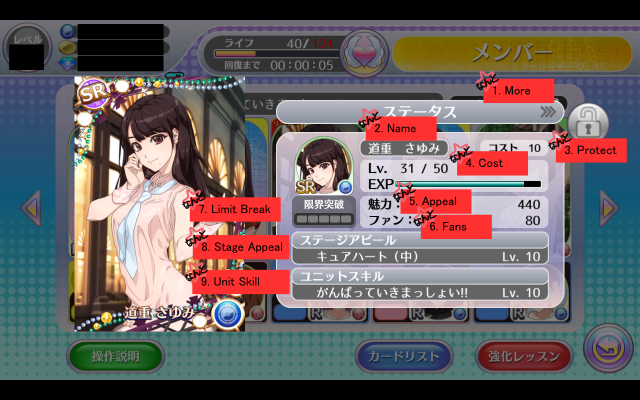
Image – the card of the idol, shows the rating (N < R < SR < SSR < UR), and the type (blue sound, red dancing, yellow fashion) of the Idol.
1. More – the >>> will flip the profile over to the flavor text, showing their nicknames, hobbies, birthdate, etc. If you can’t read kanji yet, flipping to that and seeing their nickname in Hiragana might help you figure out who is who!
2. Name – the Idols name
3. Protect – the lock icon can be clicked to protect the card. When protected this icon will be orange and look like a closed lock. Locked cards cannot be graduated or sacrificed in lessons, good idea to lock the cards you love!
4. Cost – how much it will cost to use this Idol in your group. Rarer costs more!
5. Appeal – Same as MyChara/Avatar, base points earned for hitting notes in lives.
6. Fans – Same as MyChara/Avatar, base hit points added to your group
7. Limit Break – Similar to MyChara/Avatar, for Idol cards the Limit Break will raise the level cap of the card allowing it to gain more appeal and fans. In order to level break a card, you will need to sacrifice a copy of one to another (ex. Using a Rare Sayu card as a sacrifice to another Rare Sayu card will Limit Break once!). A card may have it’s limit broken 5 times!
8. Stage Appeal – their in live skill, the games help file says it’s 1 of 2, but I’ve seen 3 different types ((High)Tension, Positive Heart, and Cure Heart) Levels vary from 1 – 10. Only skill I know the effect of is Positive Heart which supposedly softens damage from making mistakes around the time it’s triggered.
9. Unit Skill – the unit ability provided by the card. Levels vary from 1 – 10. Mainly each group (Momusu, Berryz, C-ute, Suma, and J=J) have different unit skills. Normal cards have stunted versions of unit skills that don’t count as the same as the version in Rare and up.
—–
!!NEW!! Stage Appeal/Skills
—–
Skills in general range from level 1 to 15 (as of the last update of this guide-ish). For non-avatar cards, combining cards with similar skills (both stage appeal and unit skills) has a chance of raising the level of skill with exact stage and unit skills being most effective. The effect of skill raising appears limited, as N can boost R but N cannot boost SR skills.
The Avatar character gains skills based only on the outfits she has equipped and cannot be boosted by feeding other cards into her.
—
Thanks to the inclusion of new clothes in game we now have confirmation on the general ability these skills have with your characters.
キュアハート (Cute Heart) – When this skill activates you’ll restore HP
ポジティブハート (Positive Heart) – When this skill activates the damage you’ll take from “misses” will be lessened for a duration.
ハイテンション (High Tension) – When this skill activates that member will have a point booster for a duration.
ヒートアップ (Heat Up) – When this skill activates all members in your unit will have a point booster for a duration
サウンドウェーブ (Sound Wave) – When this skill activates that member will gain a boost in points for sound type (blue) markers.
ダンサーズハイ (Dancer’s High) – When this skill activates that member will gain a boost in points for dance type (red) markers.
スキルなし (No Skill) – We knew this did nothing, but for clarity I’ll mention it here too ^^;
In addition each form of skill (besides no skill) has a regular, medium/mid (中), and high/grand (大) form. The exact difference between the form is not yet known, though we can assume higher forms do more or last longer.
—
Unique Unit Skill
—
Currently one item (ブラックキャミソール/Black Camisole) comes with an Avatar exclusive “UNIT SKILL” Since it is only available for the avatar and is the only one seen it’ll be here for now.
バーニングハート (Burning Heart) – No known unique benefit is known, helps contribute to teams overall group skill level.
—–
Card List
—–
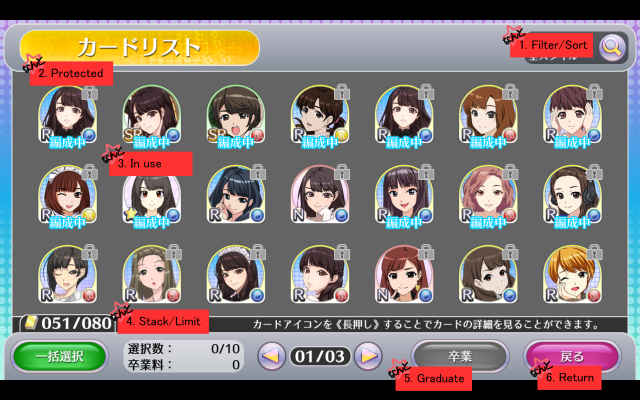 1. Filter/Sort allows you to order your list and filter by color.
1. Filter/Sort allows you to order your list and filter by color.
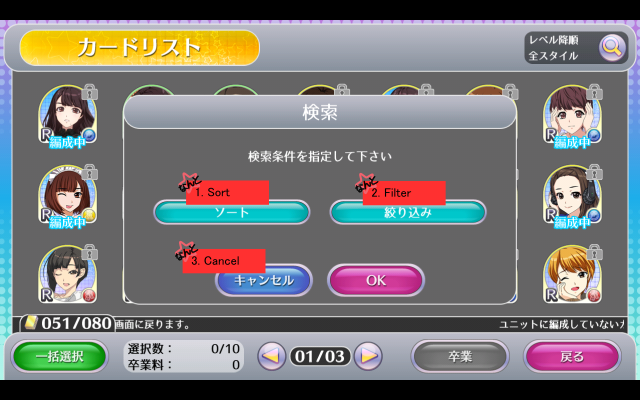 The sort option has two sets, Sort and Filter
The sort option has two sets, Sort and Filter
Sort – Arrange your list based on the following standards in order
-Name
-ID/Index
-Added
-New
-Low to High Level
-High to Low Level
-Fan Number
-Appeal Number
-Low to High Rarity
-High to Low Rarity
-Low to High Cost
-High to Low Cost
-Style/type
Filter – Filter restricts what type you’ll see in order
-All styles
-Sound (blue)
-Dance (red)
-Fashion (yellow)
2. Protected – A lock next to idol token means it is protected, this prevents you from accidentally sacrificing it in a lesson or selling it with graduate. This can be toggled in the idol’s profile screen found by holding down on their token anytime it is available.
3. In use – The blue text seen here shows when an idol is currently being used in a group. In used idols cannot be graduated or sacrificed lessons, though they can be powered up in lessons.
4. Stack/Limit – How many cards/idols you currently possess against your limit, the limit raises as you gain levels.
5. Graduate – after selecting cards you can click this button (which will be orange) to graduate them in exchange for haro money. Note the green button on the left will select the first 10 cards/idols available in your current sorted list, this is a fast way to graduate in mass.
6. Return – returns to the previous screen.
—–
Lesson
—–
Time to power up cards! Plan well and make the most of it!
1. Target Card – the card you want to power up.
2. Lesson Partners – aka fuel cards, the cards you’ll sacrifice to power up your target card.
3. Results – this will show how much experience the card will get and if any limit breaks will happen. Note the Haro value on the bottom is how much it will cost to do the lesson. The cost will be the same regardless of if you give it 1 card or 10, but the cost goes up the higher the level the card is.
4. Run Lesson – POWER UP TIME!
Note: Lessons are not the best way to level up a card as they cost heavy for what eventually barely adds any experience to the card. Lessons currently are more for powering up skills and causing limit breaks.
Skills
—–
Currently the exact formulas for skill ups are not known but by feeding cards of at least one rarity below the current card or better with the same skill to your target card you have a chance to power up your target cards skills.
In experimentation I’ve taken a Level 1 rare and fed it a copy of it’s own card and 9 other cards with similar skills which raised it’s skills several levels, but at the same time at high levels it takes 2 rares of the same type to raise a level 1. In other words I have no idea what the formula is.
!!NEW!! Unconfirmed experimentation. While you’re more likely to gain the skill ups from feeding characters with the same skills, it might be that group compatibility plays a factor in the likelihood of enhancing skills, as using characters with no stage appeal skill can provide stage appeal skill raises.
Limit Breaks
—–
Giving copies of the same card to your target card will cause a limit break, raising the level cap of the card (ex: give Rare Sayu another Rare Sayu and rejoice!). Since duplicate cards will have the same skills this is a sure fire way to raise a cards skills as well. If you can save up the 5 cards needed to complete the limit break and some other cards with the same skills you could max their skills with some luck!
—–
Lives
—–
Time to actually play, the musics running and you have to tap the circles when the markers reach them! But before we get to that you’ll have to pick your song!
1. Change Song – shows the list of songs you can chose from, if you’ve played a rhythm game this is familiar, you can select difficulty after selecting a song by changing it at the top of the Live screen seen above.
2. Change Unit – Changes which of your pre-made units you’ll be using for the song, you cannot form or change the formation of your teams in this screen.
3. Live – to the music…but before that….
Live Partner
—–
You get to pick a helper for your live, this helpers Fan number will help you. Their skill is also shown though it is unknown if that helps you in a live in any way.
1. Friend Stats – your current Friend power and how long till your next limit break. This appears to be the only place I’ve seen this stat appearing so be sure to check it occasionally. You will need to go to the Avatar menu to actually have your MyChara limit break.
—–
Playing
—–
It’s a rhythm game…hit the things when the things go to them. Here’s some things the game says though
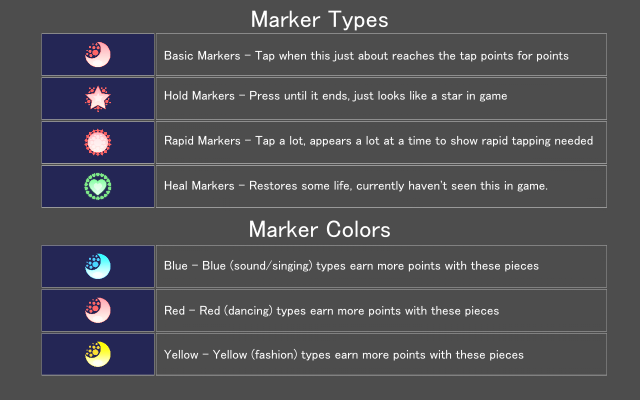
After you finish you’ll get your scores and rewards, if your rewards show a blue chip that means you are getting bonus friend points.
After getting your rewards you’ll be given friend points for having a partner. If this partner wasn’t a friend you’ll be given the option to invite them as a friend. Sometimes you cannot invite them as a friend because they may already be full. Don’t feel bad, just look for another one next time.
You’ll get more friend points from friends than random people.
—–
Scoring
—–
Quick/sloppily translated from A ハロプロタップライブ Wiki (Japanese)
Basic Score Info (As of 2015 April)
—–
Single and Rapid Notes:
Front Row Member Charm Value x Judgment x Color x Unit Skill Multiplier
Hold Notes:
Front Row Member Charm Value x Start Hit Judgment x End Hit Judgment x Color x Unit Skill Multiplier
Judgment multipliers: Perfect = 1, Great = 0.8, Good = 0.5
Note Color matches member color: 1.2
Unit Skill Multiplier
Group Level Skill to multiplier
Normal:
1 = 1.3x
2 = 1.35x
3 = 1.4x
Rare and up:
1 = 1.6x
2 = 1.8x
3 = 2x
4 = 2.2
5 = 2.4
6 = 2.6
7 = 2.8
8 = 3
9 = 3.2
10 = 3.5
Combo Bonus:
Score you built x Combo multiplier
1~50 Combo = 0.1x
51~100 Combo = 0.15x
101~200 Combo = 0.2x
201~ Combo = 0.25x
Fever time:
Fever time makes back row member charm values add to front row member charm value.
High Tension:
Note: to the JPN wiki’s knowledge High Tension does nothing in the backrow
When High Tension Triggers score for that member will be:
Front Row Member Charm Value x Judgment x Color x (Unit Skill Multiplier + High Tension Multiplier)
Right now level 10 is the highest known value change for high tension
High Tension (Lv 10) = 0.8
High Tension (Mid) (Lv 10) = 2.5
High Tension (High) (Lv 10) = 3.5
No record of the other level multipliers but it’s probably even units going downwards.
Heat Up:
Note: Heat Up values will stack if active at the same time
Front Row Member Charm Value x Judgment x Color x (Unit Skill Multiplier + Total Heat Up Values)
Right now level 10 is the highest known value change for Heat Up
They are the same values as High Tension though Heat Up (High) value is not recorded.
Nice Tag:
When Nice Tag Triggers it’ll multiply the Heat Up and High Tension values based on how good the compatibility is.
Triangle = 1.3, Circle = 1.5, Double Circles = 1.75
Now the math is up to you unless they change the values and/or the Japanese wiki is wrong (which is not their fault they’re experimenting like we are).
—–
Random Tips
—–
-You will need to pass every song with better than a C to move on smoothly.
-As of this guide there is currently 18 story sequences, and when you complete them all you’ll have unlocked 18 songs (6 songs with 3 difficulties).
-Song updates are being applied all the time but currently only the above mentioned 18 songs are story locked, the other songs will be unlocked with them as you go along if they are not initially provided.
-Card/Idol drops for songs seems to be sided (but not restricted) to the groups songs, so you’ll be more likely to get a Momusu girl from a Momusu song.
-Overall benefits from songs appear to be the same regardless of the level given (at this time of the game, last updated 15/01/06). For example if a hard song costs 50 it’s easy version costs 10, playing the easy version 5 times and getting the same rank will give you the same amount of base experience and haro-money. I you play the easy version 5 times you will have 5 times the chances for drops. Some items are easier to get on hard though, so balancing between that is up to you.
-Remember that song drops are based on the rank (E-SS) that you get for the song (at this time of the game, last updated 15/01/06). Some items (usually considered weaker) are only obtainable getting lower ranks (up to A) and some items require scoring better for better chances (SS).
—–
Links to Other People’s Things
—–
-Since events are happening over and over, and it’s getting harder to update this guide, I’ll link you to some other sources which may update more frequently or with more information that I haven’t included.
–A Hello!Pro Tap Live Wiki (English)
–A ハロプロタップライブ Wiki (Japanese)
—–
Thank you for enjoying Casual guide version 1.05, the first and probably last full length guide I’m gonna do for this, and your starting point for if you want to play but have no idea how to. Exploration is good but just be careful not to waste star stones or accidentally get rid of your favorite cards!
Got some tips? Got some idea of how any of those formulas work? Know something I forgot to mention? Comment on it below and help your fellow person out!
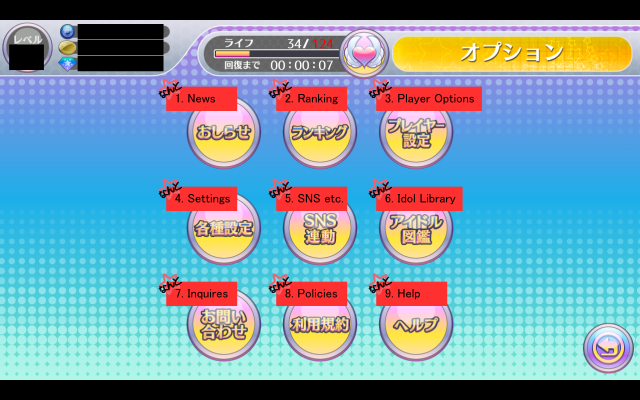
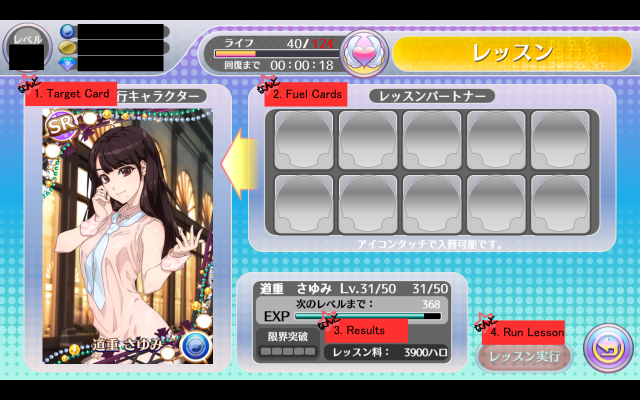
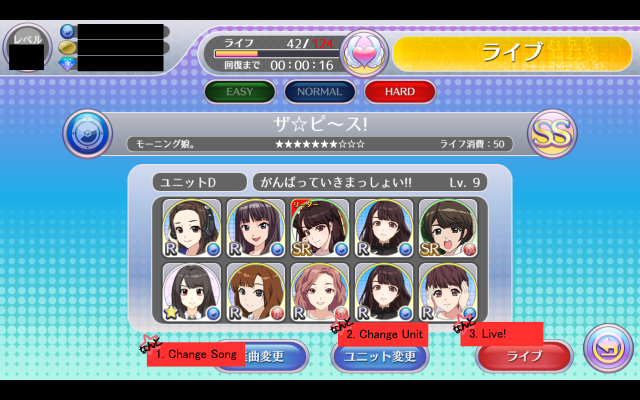
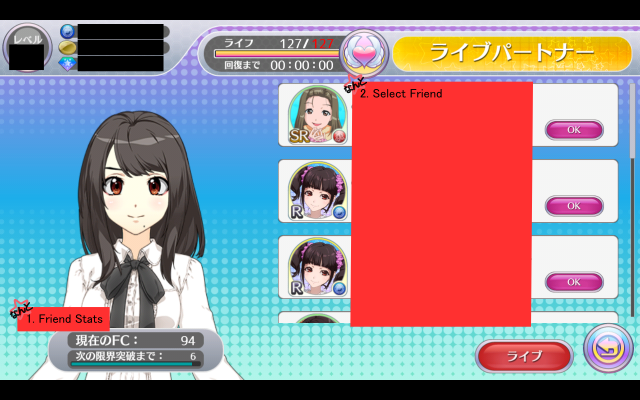
About the star sign, you sure it’s just press? Because I always do so, yet I never get “great” or “perfect”. Mostly just “miss” or “bad”. And I know I tapped them on the right time and I do hold them. This is a problem because these cause me to lose the same song each time >_<
You’re suppose to hold down then tap again when the star shows up at the end.
Just lifting at the ending star works as well, the timing for it is a little finicky on timing for what I assume is it being based on beats more than it is on seconds (so it’s got less tolerance for correctness on very fast songs). But indeed, releasing at the end of the star works too.
Honestly the instructions are probably clearer now, but this guide is rather old now. ^^; Who has the time to update it though.
Thank you so much for all your effort and patience writting this. This is very helpful. After reading this I made a unit that can beat any song in SS rank even if I miss sometimes LOL (though I seriosuly think they should base your rank in getting perfects, not in your score…)
Thanks for the comments, I’m glad people are making good use of the guide…though there are more things I could include that I didn’t cause I wrote that all at once and got tired near the end…lol. But I don’t know if people would want more
@Nerupyon to my knowledge it’s really just a tap and hold, but the timing for it is a bit different than what you think. I can’t speak for your sense of timing but when it comes to the hold part I find that I have to let go a little earlier than I think I would in order for it to be perfect and not just good or sometimes great. It is one of the hardest things to get use to.
If you know more about skills, what they do or how to level them up… Today I used a Haruka N on my Mizuki R and she leveled both unit and personal skill… I was like “????” because this doesn’t happen always. A Masaki N did nothing to my Masaki SR for example.
Bless you. This post has helped me so freaking much.
@Cake – I don’t know the exact nature of the leveling up skills but I have noticed that similar nature cards can be helpful, I personally have been trying to use cards either with the same skill, the same group, or the same nature to see how it works, but haven’t been getting easily analyzed results since efficiency would always require using 10 cards whenever you try to power them up.
In general I believe you’re always dealing with percentage of a chance of powering something up, just that percentage goes up with more related and higher rarity cards.
But I have updated the guide to include the Stage Appeal skills since the new clothes options tell you about that.
I have been stuck on Brainstorming at normal level for a while now… I got a B but the story doesnt seem to continue… Can you maybe help me?
It’s hard for me to find out exactly what you’d need because once they unlock you don’t get any way to test it. Do you have Bs on everything? Our original testing/asking others sounded like Cs were the key but if you’re having a problem perhaps your points as a total need to be higher? If I hear word I’ll be sure to add it to the file though! Sorry I can’t help more!
Could you please give me a nantonaku translation of the Smileage Winter event campain’s oshirase? Is there anything else than about the new gacha or Uchouten Love costing half of the normal life?
There is Ikuta’s stage appeal skill “ヒートアップ” not know the effect yet.
Do you think they’ll add more song? Repeating 6 songs is boring now (though actually I’m only play Berryz Koubou song). I see the button on the Story and 3 dots but it do nothing when I press > button.
About upgrade appeal skill, I guess it random rise up 1 level for each similar skill the card have. For example:
Base card: 嗣永 桃子 (R)
Stage appeal: ハイテンション
Unit skill: ハピネスクリエイト
Material Card: 嗣永 桃子 (N)
Stage appeal: ハイテンション
Unit skill: ホープクリエイト
Because it only have 1 similar skill (ハイテンション), you have chance to rise 1 Level of both Stage appeal and Unit skill.
If you change the Base Card to 嗣永 桃子 (N), they have 2 similars skill (ハイテンション and ホープクリエイト), so you have chance to rise 1 or 2 Level of both Stage appeal and Unit skill.
Then again, if you change the Base Card to 夏焼 雅 (N), because 夏焼 雅 not have Stage appeal skill, so they only have 1 smimilar skill (ホープクリエイト), you only have chance to rise 1 Level of both Stage appeal and Unit skill.
So, basically you often rise up skill level if you use same group member (because they all have same Unit skill), but you can also rise up skill level of diffirent group member if they have same appeal skill (like 嗣永 桃子 (N), 中西 香菜 (N) and 高木 紗友希 (N)), the rarity of card isn’t effect.
Thank you so much for updating with the numbers and stuff. Really!! <3